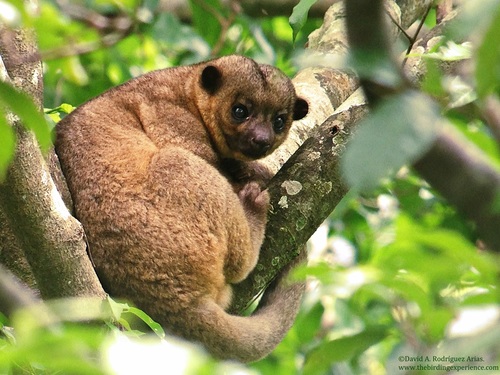
Kinkajou
The kinkajou, or Potos flavus, is a rainforest dweller with a prehensile tail and large, night-adapted eyes. Known for its long tongue, it aids in pollination, weaving through the canopy at night in search of fruit and nectar, making it a vital ecological contributor.
23 years
Lifespan
1.36 - 4.54 kg
Weight
Length: 41 - 76 cm
Size
Brown, Gold
Color
Least Concern
Conservation Status
Decreasing
Population Trend
Characteristics
Potos flavus, commonly known as the kinkajou, is a nocturnal mammal found in Central and South American rainforests. It has a prehensile tail, large eyes adapted for night vision, and a long tongue for extracting nectar. Kinkajous are arboreal and play a role in pollination.
Distribution Range of the Kinkajou
Potos flavus, commonly known as the kinkajou, is native to the tropical forests of Central and South America. It is found from southern Mexico through Central America, and into northern parts of South America, including Brazil, Colombia, Venezuela, Ecuador, Peru, and Bolivia.
Kinkajou's Habitat
Environmental Conditions
The kinkajou inhabits tropical rainforests, preferring dense, evergreen forests. It is primarily arboreal, spending most of its time in the canopy of these forests. The environment is typically warm and humid, with high annual rainfall, providing lush vegetation and abundant food sources.
Ecological Niche
Kinkajous are nocturnal and arboreal frugivores, primarily feeding on fruit, nectar, and small invertebrates. Their ecological niche involves pollination, as they play a role in dispersing seeds and pollinating flowers while feeding on nectar. Their prehensile tail and dexterous limbs allow them to navigate the forest canopy efficiently, making them well-adapted to their arboreal lifestyle.
Copyright @ Nature Style Limited. All Rights Reserved.
 English
English